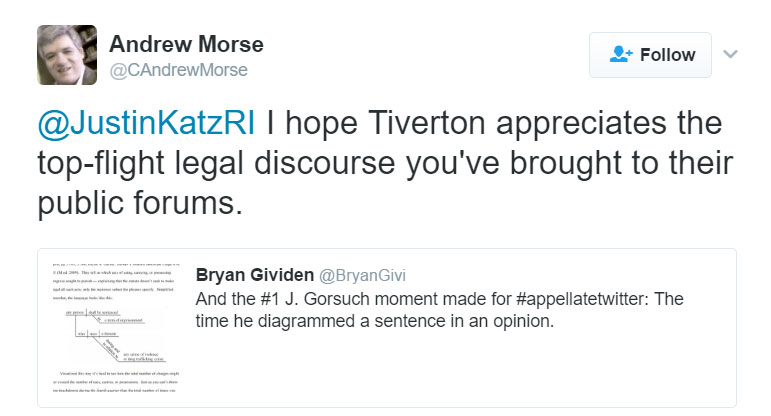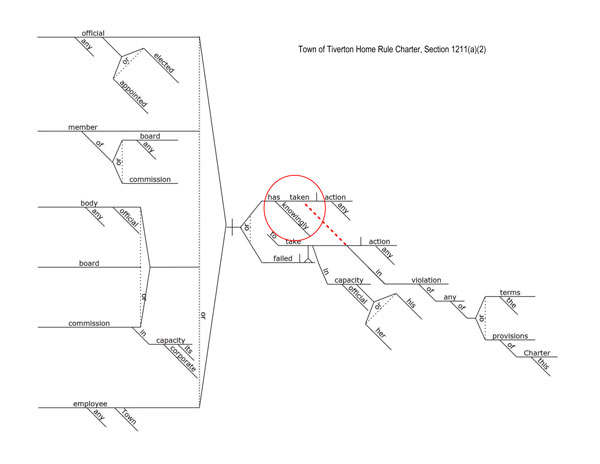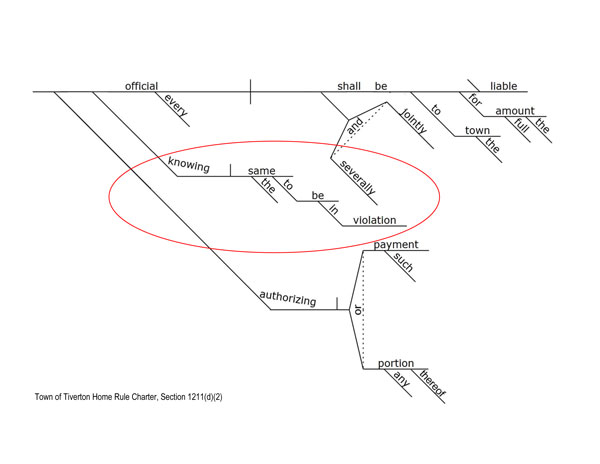Real Strict Constructionism in Interpreting the Law
Andrew Morse recently quipped, on Twitter, that Supreme Court nominee Neil Gorsuch and I have a similar approach to the law in at least one respect:
Judge Gorsuch has, at least once, used a sentence diagram when seeking to apply the law to cases before him. In my case, Andrew’s reference is to the time I filed a charter complaint against Tiverton’s town clerk. Key to the case was whether, according to the Town Charter, the clerk had “knowingly taken any action” that violated the charter.
A diagram decisively proves that the charter means the knowledge must be of having taken the action, not of having been in violation of the charter:
To remove any ambiguity, I also diagrammed a sentence in the same section of the charter that increases the penalty for charter violations if the official takes an action knowing that it’s a violation:
There really isn’t ambiguity that a town official can violate the charter without knowing that he or she has done so and then be penalized more harshly if he or she did know it was a violation. As it happened, the politicians on the Town Council at the time wanted to find the clerk innocent, and so they seized on their own grammatical ignorance to say that she didn’t “knowingly violate the charter.” (As an aside: They were helped, in this regard, because the lawyer they hired to advise them seemed to see his role more as to facilitate their pre-determined conclusion than to explain the law to them.)
Given my political philosophy, I have to admit that such actions by government are why we need more policy to be decided locally, rather than at the state and federal levels. State and federal courts have left no reason to expect that they are immune to applying the law to suit their political preferences in any given case (paging Judge Robart). At least at the town level, everybody involved knows full well the ability of opponents to leverage every misstep.
The bigger point, thought, is that graphing sentences in legal debates really shouldn’t be so rare that Andrew would instantly connect me with a Supreme Court nominee on the basis of the practice. How can any judge claim to be objectively applying the law without evincing a deliberate approach to understanding what the sentences in the law actually mean?
One suspects that’s the reason sentence diagrams aren’t more common.




